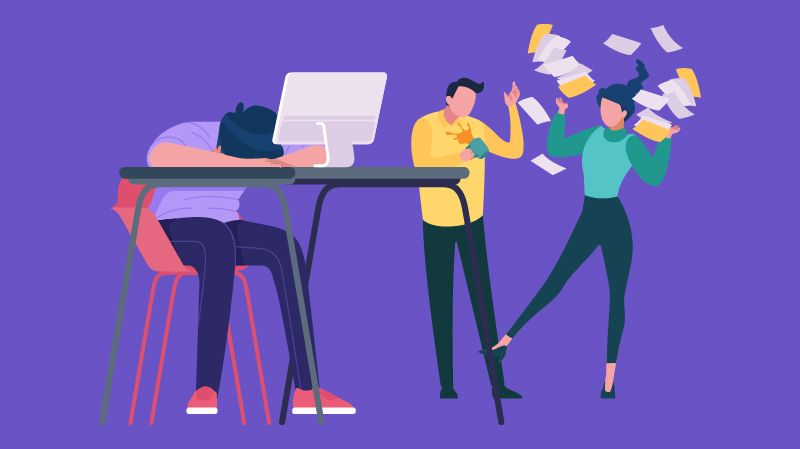Importance of Cultural Diversity in The Workplace

A Global Employee Recognition and Wellness Platform
Nowadays, most businesses are going global, and it is not likely to change anytime soon. The success of these companies depends on the workforce and the value they bring. This reason makes cultural diversity a top priority for most organizations.
People from different backgrounds come together to contribute to organizational success. Interacting with people from various ethnic and cultural groups creates a positive work environment.
Embracing cultural diversity in the workplace is essential for every business to establish its brand value.
This is why many organizations have implemented diversity and inclusion programs.
Embracing cultural diversity in the workplace unlocks a wealth of innovation and perspective, driving businesses forward in a global market. However, it also presents challenges that require strategic management to truly thrive.
What is cultural diversity in the workplace?
Cultural diversity in the workplace refers to hiring employees from different backgrounds, regardless of race, gender, and culture.
Hiring a diverse pool of talent is beneficial for the company and the employees.
The human race comprises diverse people with distinct experiences and skills. Disregarding someone because of who and what they are can make you lose out on great talent.
Types of cultural diversity in the workplace
Diversity amongst workers refers to a diverse group who have experienced discrimination. Diversity and inclusion program helps these employees overcome such barriers a work.
Diversity can mean a lot of things. Here are some of the different types of diversity in the workplace.
Race- Racial identification is one of the first things when we talk about diversity. Race defines people based on skin color, genetic inheritance, and geographical origin. Workers of color often face challenges, such as hiring obstacles and discrimination by peers
Ethnicity- Refers to people belonging to a social group with a common national or cultural tradition. With companies going global, diverse races and ethnicities might bring language barriers. Creating a clash in a diversity of thoughts while carrying out operations. Some companies have special ethnic groups like the Hispanic Chamber of Commerce for oppressed communities to cater to this issue.
Gender- As per the World Economic Forum data, It will take 208 years for the U.S to reach gender equality. Gender is a pivotal part of cultural diversity in the workplace. And to remind you, gender is what people identify as irrespective of the gender assigned at birth.
Religion- Cultural diversity is vital to promote religious equality in the office. It promotes tolerance and diligence. It impacts workers’ dress, dietary requirements, and religious holidays.
Sexual Orientation- The LGBTQIA+ community has faced immense discrimination throughout. They represent different sexualities and gender identities and thus have unique needs. Companies need to address LGBTQIA issues and create a safe space for these employees. The Supreme Court of the United States also ruled that the Civil Rights Act of 1964, applies to discrimination against LGBT folks as well.
People with disabilities- Diverse companies must give equal opportunities to workers with disabilities. Whether impairments from vision, learning, or mental health. Diversity and inclusion programs will do wonders to ensure diligence towards such workers.
Benefits of Cultural Diversity in the Workplace
Many companies are working towards creating a diverse work culture. We must remember the protesters who fought for the justice of George Floyd, who was killed for being black.
Employers must show empathy and compassion towards every employee to promote diversity in the workplace.
Employers must not show cultural insensitivity towards any employee in the workplace. They must know the benefits of a successful cultural diversity process.
Let’s take a look at the benefits that cultural diversity brings to the workplace.
Higher Team Performance
Cultural diversity in the workplace helps to increase productivity at work. Diversity is a combination of beliefs, values, and norms for people to work on a common goal. Promoting cultural diversity in the workplace enhances team performance because:
- It allows employees to learn and grow by sharing each other’s experiences.
- Employees from different backgrounds engage with each other.
- It enables them to come up with fresh ideas.
- It allows them to think out of the box and increase productivity.
A diverse workplace includes employees from different backgrounds, races, and ethnicities.
And when they work together, it breeds a positive work environment.
Creativity
The second benefit of cultural diversity is enhancing creativity in the team.
When different groups of people with diverse ideas come together and work. One can find a solution. Every individual has their way of thinking, operating, decision-making, and problem-solving skills.
By promoting diversity in the workplace employers can:
- Inspire their workforce to perform their best
- Increase employee engagement
- Foster creativity and innovation amongst team members
Increases profits
Many studies have found- a diverse work culture increases profits for the company.
As per the 2013 survey of the Centre for Talent Innovation, 48 percent of organizations in the US with a diverse workforce showed improvement in their market share compared to the previous year.
For a global company, language diversity can be an excellent strategy to bring in new clients.
For example, companies dealing with India’s businesses hire people fluent in major Indian languages. It increases their reputation in the Indian communities. Such strategies can increase sales resulting in improved profits.
Inspires trust and respect
The best way to learn about various cultures and ethnicities is from coworkers who come from different backgrounds.
While your workers are on a lunch break with their colleagues, conversations happen. Promoting a diverse work culture is all about employees:
- Getting to know their culture and lifestyle
- Communicating about life experiences
- Discussing their festivals and foods
- Building trust and respect.
This increases employee engagement and motivates them. Which is an achievement for the company.
Employer Branding
Cultural diversity in the workplace reflects positively on company reputation. Hiring people from different backgrounds enhances employer branding.
A diversity-based company is generally considered to be on par with the times. As a result, top talents, investors, and clients are a shoo-in.
A diverse pool of skill sets and experiences allows a company to:
- Provide genuine service to customers globally
- Bring a stellar and personalized customer experience to their client base
Wide range of skills
With a diverse workforce comes diverse skills. When companies hire people from all sorts of backgrounds, they bring in specific talents and abilities.
Companies often enjoy a versatile range of products and services to offer their respective markets a more comprehensive range of skills and knowledge. It won’t be wrong to say diversity in work culture means diversity in skills.
Reduces discrimination and harassment
Often people suffer different types of workplace harassment and discrimination (like sexual, verbal, racial, etc.). And implementing a diverse work culture can reduce unwarranted activities in the company.
Companies must implement a diversity and inclusion program to:
- eradicate negative emotions
- racism
- homophobia
- sexism, etc.
Cultural diversity builds respect amongst employees. It helps them to accept their differences, and make work fun and engaging.
Challenges and Disadvantages of Cultural Diversity
Cultural diversity in the workplace offers many benefits, but it also brings several challenges and disadvantages that organizations need to manage effectively. Here are some of the key challenges:
Communication Barriers
Language differences and varying communication styles can lead to misunderstandings.
Non-verbal cues, like gestures and expressions, can be interpreted differently across cultures, causing confusion.
Integration Issues
It can be difficult to create an inclusive environment where everyone feels respected and valued.
Employees from diverse backgrounds might find it hard to fit into existing teams, leading to feelings of isolation.
Conflict and Tension
Different cultural values and work styles can lead to conflicts and misunderstandings.
Insensitivity to cultural differences can escalate into broader workplace tensions.
Bias and Discrimination
Unconscious biases and stereotypes can affect decision-making and interactions.
Discrimination or preferential treatment based on cultural background can harm team cohesion and morale.
Training and Adaptation Costs
Providing cultural competency training and support can be time-consuming and costly.
Adapting company policies and practices to meet diverse cultural needs requires significant effort and resources.
Resistance to Change
Employees used to a homogeneous work environment may resist the changes brought by increased diversity.
Diversity initiatives can face pushback from those who don’t immediately see the benefits.
Productivity Issues
In the beginning, diverse teams might experience lower productivity as members learn to work together.
Time spent resolving cultural misunderstandings and conflicts can detract from work tasks.
Decision-Making Delays
Diverse teams might take longer to reach agreements due to different perspectives and approaches.
Thorough discussions to consider all viewpoints can slow down the decision-making process.
Overcoming Challenges
While these challenges exist, they can be addressed with proactive strategies:
Effective Communication Training: Provide training to improve communication skills and cultural awareness.
Inclusive Policies: Develop policies that promote respect and inclusion for all cultural backgrounds.
Conflict Resolution Mechanisms: Establish clear procedures for resolving conflicts in a culturally sensitive manner.
Diversity Initiatives: Promote diversity and inclusion through targeted initiatives and committed leadership.
Continuous Learning: Encourage ongoing learning to understand and appreciate cultural differences.
By recognizing and addressing these challenges, organizations can create a more harmonious, productive, and innovative work environment that benefits from cultural diversity.
6 Types of Cultural Diversity in the Workplace
Diversity amongst workers refers to a diverse group who have experienced discrimination. Diversity and inclusion program helps these employees overcome such barriers a work.
Diversity can mean a lot of things. Here are some of the different types of diversity in the workplace.
Race
Racial identification is one of the first things when we talk about diversity. Race defines people based on skin color, genetic inheritance, and geographical origin. Workers of color often face challenges, such as hiring obstacles and discrimination by peers
Ethnicity
Refers to people belonging to a social group with a common national or cultural tradition. With companies going global, diverse races and ethnicities might bring language barriers. Creating a clash in a diversity of thoughts while carrying out operations. Some companies have special ethnic groups like the Hispanic Chamber of Commerce for oppressed communities to cater to this issue.
Gender
As per the World Economic Forum data, It will take 208 years for the U.S to reach gender equality. Gender is a pivotal part of cultural diversity in the workplace. And to remind you, gender is what people identify as irrespective of the gender assigned at birth.
Religion
Cultural diversity is vital to promote religious equality in the office. It promotes tolerance and diligence. It impacts workers’ dress, dietary requirements, and religious holidays.
Sexual Orientation
The LGBTQIA+ community has faced immense discrimination throughout. They represent different sexualities and gender identities and thus have unique needs. Companies need to address LGBTQIA issues and create a safe space for these employees. The Supreme Court of the United States also ruled that the Civil Rights Act of 1964, applies to discrimination against LGBT folks as well.
People with disabilities
Diverse companies must give equal opportunities to workers with disabilities. Whether impairments from vision, learning, or mental health. Diversity and inclusion programs will do wonders to ensure diligence towards such workers.
Summary
When hiring new employees, make an intentional effort to engage a diverse group of people. This means including individuals from different racial and ethnic backgrounds, sexual orientations, and cultural identities. By embracing this diversity, your organization can unlock the numerous benefits that come with a culturally rich workforce. These include enhanced creativity, improved problem-solving, and a more inclusive and dynamic work environment. Embracing diversity isn't just the right thing to do; it's a smart business strategy that can drive your organization to new heights.
















